Thermal Design Power aka TDP, when you’re choosing a processor, you could find this term on its specification. Not only on Processors, but TDP is also mentioned everywhere from CPU, GPU, RAM Chips, and NAND Flash of the SSDs to all those ICs who are generating a lot of heat during their operation. So, what is TDP? Why is TDP so important? And as a consumer, should you care about that technicalities? Or is it just another marketing material?
Does TDP Define Power Consumption of a Chip?
No, not really. You can find TDP mentioned in Watts so you may think that it’s defining the electrical power consumption of that particular chip. It’s not quite true although it’s related. Let’s say, you have a CPU with 65W of TDP. That doesn’t mean the CPU consumes 65W OF electrical power in its operation. Its power consumption will be way more than that but it may radiate 65W of heat per second at a certain load. If you’re comparing two CPUs from the same generation – one has 65W of TDP and one is 95W then you may get sure that the CPU with 95W TDP consumes more electrical power than the CPU with 65W TDP. Also, the CPU with a 95W TDP rating is way more powerful but the electrical power consumption of those CPUs isn’t 65W and 95W.
Read Now: How to Factory Reset Windows 11 PC

What is TDP?
TDP is nothing but a way to tell the maximum amount of heat a CPU, GPU or microprocessor can generate at a certain load. Thermal Design Power is defined in Watts which can also be said as ‘Joules/Sec’.
So, if a CPU dissipates 10 Joules of heat energy per second then we could say that the CPU has a 10W of TDP. TDP is also used to sometimes define the power consumption of a Chip. Let’s say a Processor in this example. If one Processor has 25W TDP and the other one has 65W TDP then obviously the 65W consumes more electrical power although it’s just an approximation if the CPUs are from a different time, let’s assume one will develop in 2030 and the other from 2002 then there would be a completely different story.
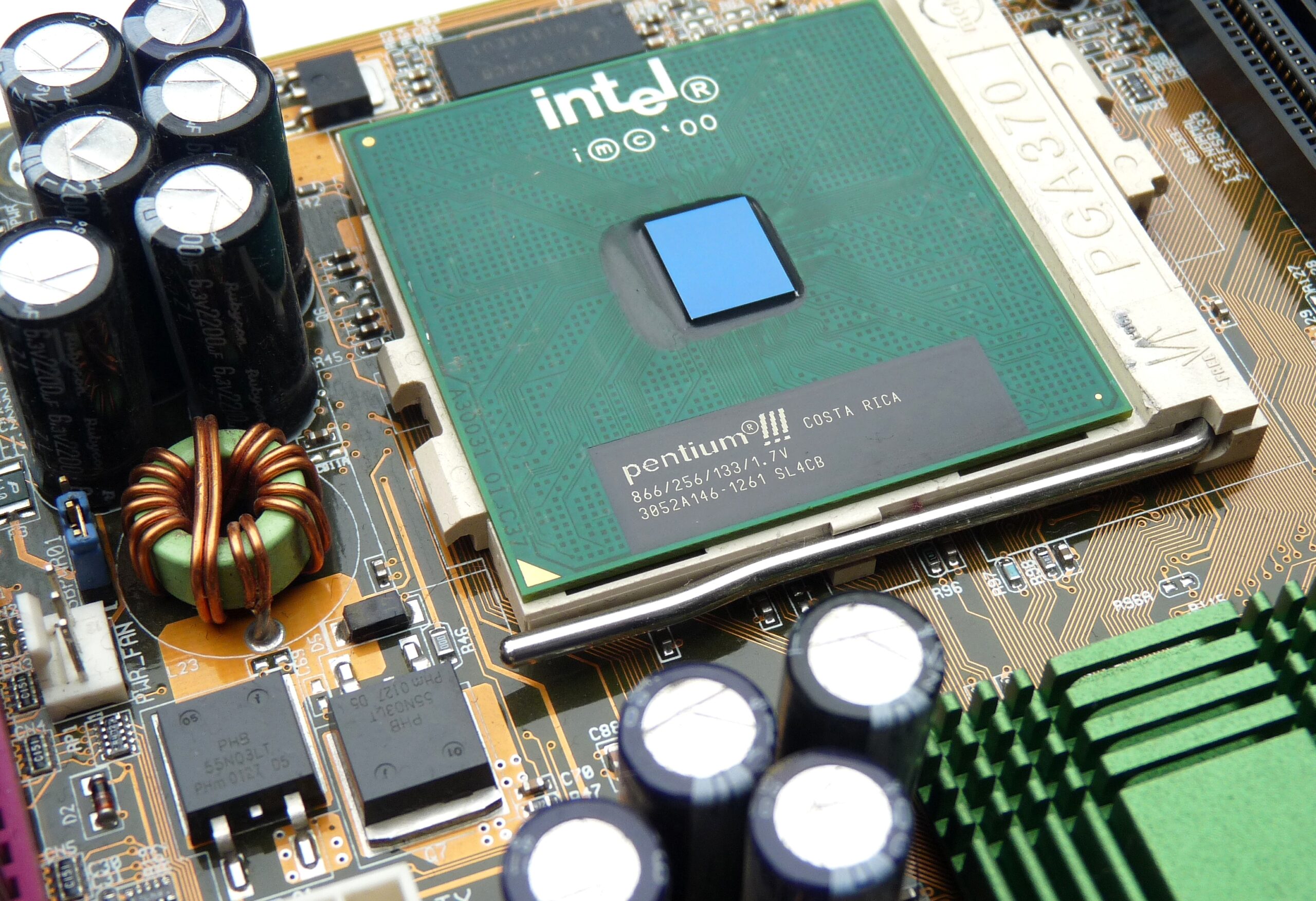
Maybe, the new CPU consumes more power than the older one but radiates way less heat during the operation so it’s TDP rating is lower. Because of the high efficiency, the consumed power is mostly transferred into the processing power and a few is wasted through heat energy.
Higher TDP Means Powerful CPU?
Well, not exactly. If you have a hand on a 10-year-old CPU with 65W TDP and the latest Ryzen 7 3700X with the same 65W TDP, doesn’t showcase the same performance. Latest Processors are becoming more efficient so they produce less heat and provide way more performance than their ancestors. So, TDP doesn’t Define the performance of CPUs until they are belonging to the same generation.
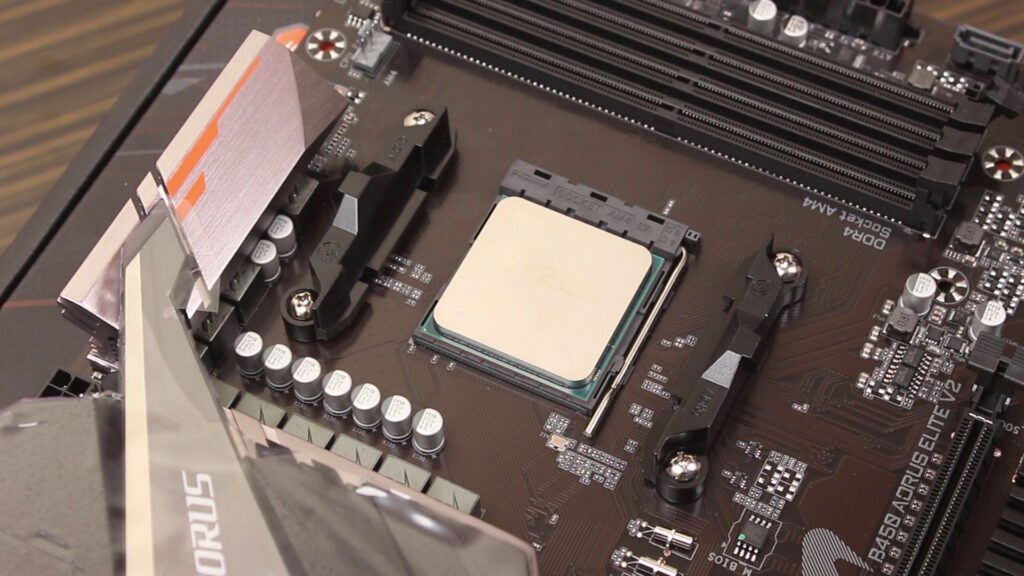
If we compare two CPUs one is from 2010 with 95W TDP and the latest CPU with 65W TDP that may or may not mean that the 95W one is more powerful. Maybe the new 65W one offers more performance, produces less heat, and consumes less electrical power than the 95W counterpart.
Let’s take an example of Ryzen 7 1700X and Ryzen 7 3700X you can see the difference in their TDP values. Ryzen 7 3700X has a TDP of 65W whereas Ryzen 7 1700X is 95W and according to userbenchmark Ryzen 7 3700X is 14% more powerful

Why is TDP so important?
The actual importance of TDP is to define the level of cooling required to stop the hardware from overheating. For example, an IC or a microcontroller is with 10W TDP. It could easily be cooled down with a passive heatsink or a small fan that directly blows the air to the chip.

On the other hand, If a part is with a 95W TDP then it should be cooled with a substantial dedicated heatsink and air also should always be blown through the fins of the heatsink by a reasonably large fan. In this case, liquid cooling should also be preferable if you want an optimal temperature. So, what kind of cooler is necessary to cool a part is guessed by understanding the TDP rating.

Understanding TDP with Few Examples
As I have mentioned before, TDP is everywhere in every single chip. SOCs which are mostly used in mobile devices also have TDP value. The latest Snapdragon 888 Plus 5G has 10W of TDP and it could be clocked up to 3 GHz.
Read Now: What is a mini PC? You Should Know These Things about Mini PC?
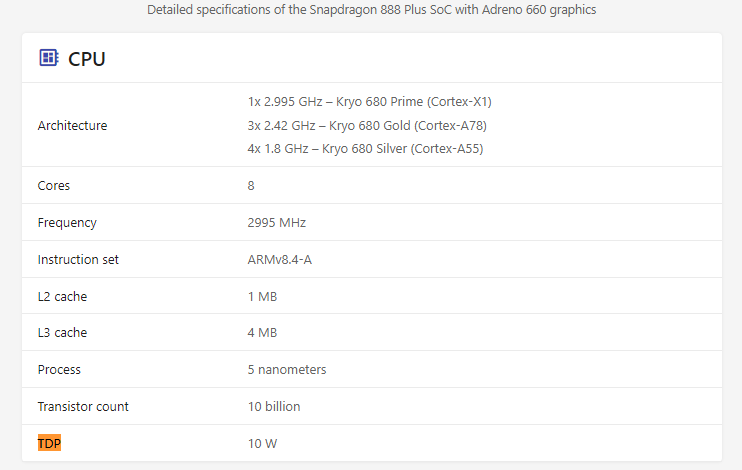
On the other hand, Ryzen 9 5950X with 105W TDP could be clocked up to 4.9Ghz.

The Snapdragon chip hardly requires any gigantic heatsink. The metal body of the phone or a small copper heat pipe is more than enough.
With the 5950X, we need a gigantic active and passive cooling system or a liquid cooling system with a 240mm or 320mm radiator.
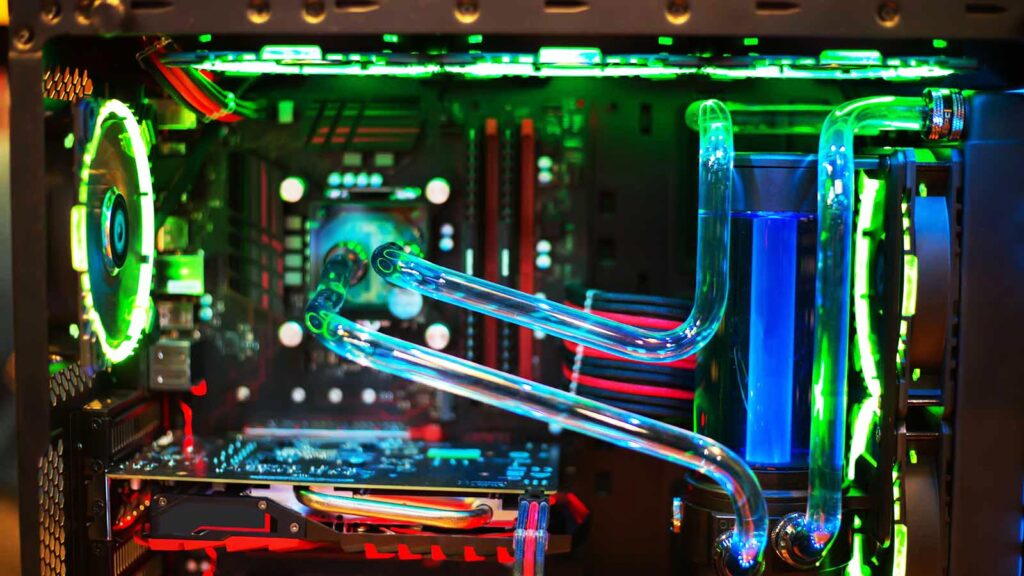
5050X here not only requires a good heat dissipation but also provides way more performance than the Snapdragon 888 Plus 5G. That’s a massive difference, and also represents the approximate power consumption of each part.

GPUs also have TDP values. Modern GPUs have even higher TDPs. RTX 3090 graphics card which has GA 102 GPU with 450W of TDP. That’s why RTX 3090 graphics cards have a gigantic heatsink. Also with the graphics processors, TDP doesn’t represent the power consumption of the GPU.
Intel Vs AMD: How Their TDP is Defined?!
Intel Vs AMD: it is a war that will never end. Intel and AMD both mention TDP rating for their processors but their defining technique is different. Intel mostly defines TDP when the CPU is running at the base frequency but if the CPU goes beyond than base clock and enters the turbo range, the TDP value also rises. In case you don’t have an idea then let me tell you that when we assign a load on the CPU, its clock speed rises, and depending upon what kind of load is assigned, it may hit its boost clock. In that situation, the TDP value is higher and we have no information for that extra TDP for that extra processing power.
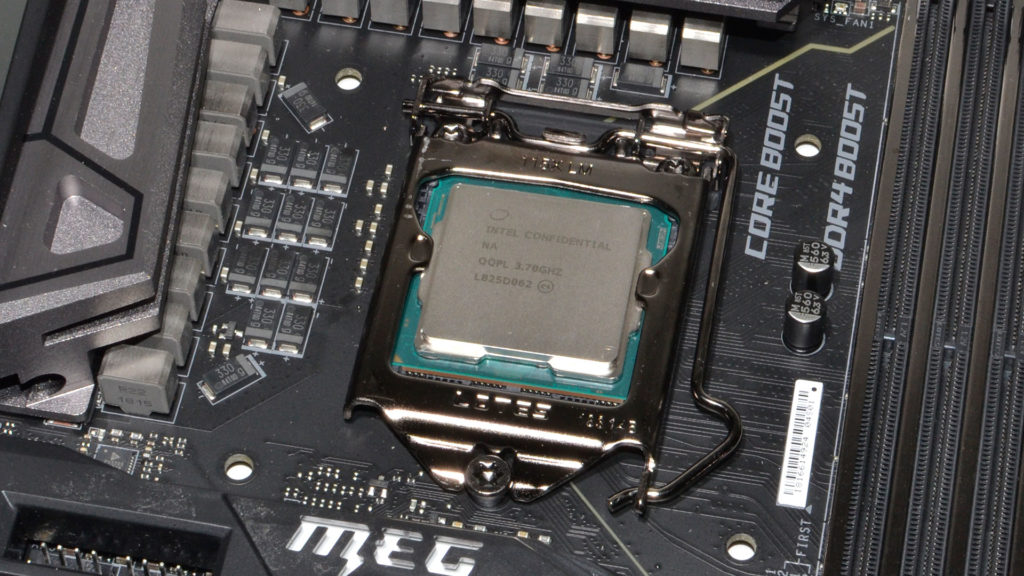
If you’re not so careful and install a cooler based on the mentioned TDP rating of your CPU then prolonged usage at the higher clock speed may damage the CPU or the CPU may underclock itself to keep it cool.
To identify this problem, just run a simple CPU stress testing tool and monitor the CPU temperature as well as the clock speed. After running for a while, If at a certain temperature, the clock speed drops suddenly then you can understand that your CPU is thermal throttle and that’s happening due to the cooler.

AMD’s TDP defining technique is logical as they always mention the TDP rating of their CPU and GPU at their boost clock and its the fact that a CPU or GPU will not exceed their boost frequency until they are overclocked. That’s why many hardware enthusiasts believe in AMD’s TDP value.
Is TDP Useful For a Consumer?
Yes, as a consumer by reading the TDP value, not only you can detect the heat production of a CPU but also you can tell the performance difference between two CPUs if they have launched in the same years or within 2 to 3 years; of course considering other CPU differentiation factors.
For example, the Intel Core i7-9700K and the AMD Ryzen 7 2700X. At a glance, you can see that the AMD Ryzen 7 2700X has a faster clock speed than i7-9700K (i7 9700K with 3.6GHz and R7 2700X with 3.7GHz), comparing TDP, the R7 2700X has 105W whereas i7-9700K has 95W. The boost clock is also lower with i7 9700K.
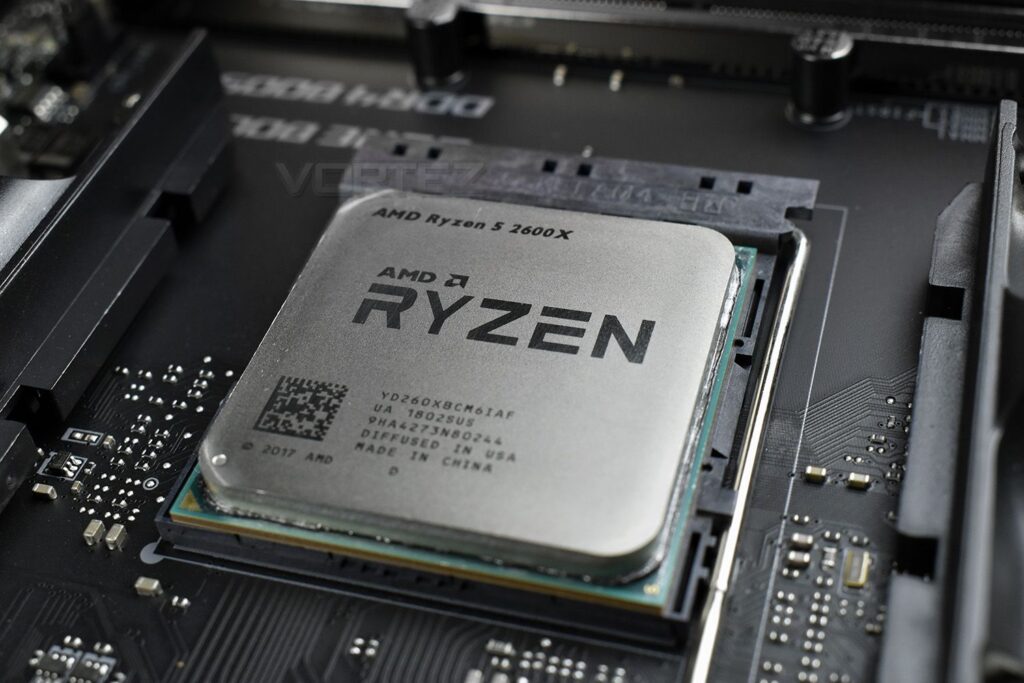
These values clearly represent that Ryzen 7 2700X is a better CPU and the benchmark is also confirmed from the User Benchmark’s Benchmark values. In some situations, i7 9700K performs better.
We can also compare laptop CPUs too. For instance, both two laptops have an i7 processor and both are belonging to the 7th generation. One has 45W TDP and one with 28W TDP. Here we are respectively talking about Intel i7-7567U and i7-7920HQ.
i7-7920HQ has a TDP of 45W that offers more processing power whereas i7-7567U with 28W TDP offers more battery life. Although battery quality depends on the manufacturer to manufacturer. TDP is only one aspect of detecting performance or battery life.
So, hopefully, you have learned something new from this article that is helpful to you. If it really so then don’t hesitate to express your valuable thoughts in the comment section below. Thanks for visiting and appreciating our work.

